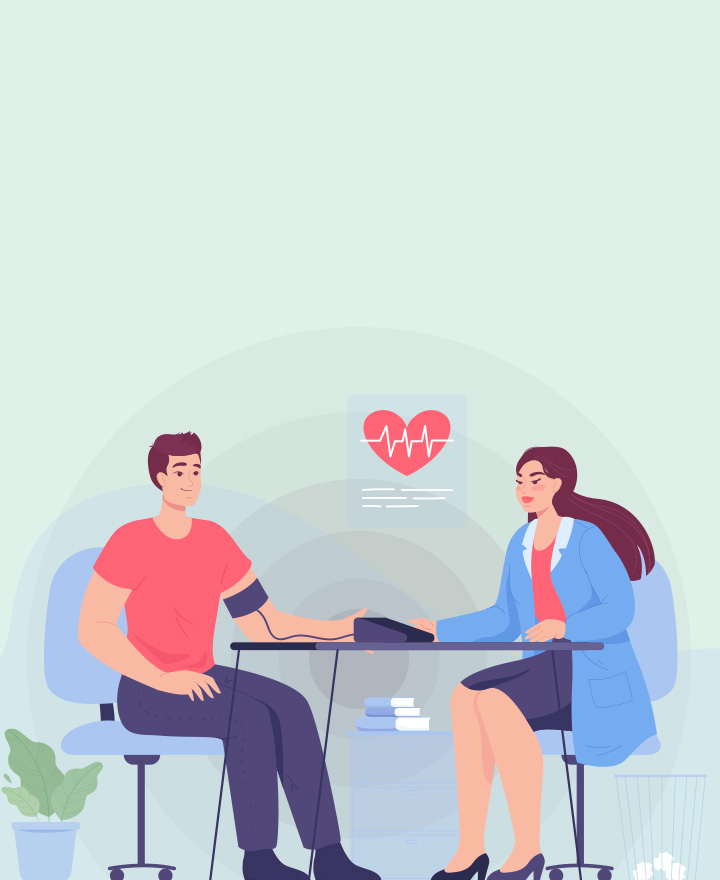

Cervical Spondylosis - Symptoms & Causes
Cervical spondylosis, sometimes called the arthritis of the neck occurs due to age-related wear and tear of the spinal disks located in the neck. With age, the disks dehydrate and shrink. Once this happens, signs of osteoarthritis develop, such as bone spurs (i.e., bony projections along the edges of bones). This condition is quite common and tends to worsen with age, affecting more than 85% of people over the age of 60. In most cases, cervical spondylosis does not cause any symptoms. However, when symptoms occur, nonsurgical treatments are often beneficial.
Symptoms of Cervical Spondylosis
Cervical spondylosis is a condition that usually doesn't show symptoms. However, when symptoms appear, they include pain and stiffness in the neck. In some cases, cervical spondylosis can lead to narrowing of the spinal canal, a hollow space within the vertebrae where the spinal cord and nerve roots are located.
When the spinal cord or nerve roots get compressed, it can cause symptoms like tingling and numbness, along with weakness in your arms, hands, legs, or feet. It may also result in a loss of coordination and difficulty walking. Additionally, you may experience a loss of bladder or bowel control.
The other common cervical spondylosis symptoms are as follows:
• A knot or bump in your neck
• Muscle spasm
• A popping, grinding, or clicking sound when you move your neck
• Dizziness
• Headache
• Numbness or weakness in the arms, hands, shoulders, and fingers
• Lack of bladder or bowel control
Causes
The most common cause is changes in spine that happens as we grow older. These changes can include medical conditions like—
• Dehydrated disks
As people age, the spinal disks between the vertebrae begin to dry out and shrink, resulting in more bone-on-bone contact.
• Herniated disks
Cracks may appear on the exterior of spinal disks, allowing the soft interior to protrude and press against the nerve roots and the spinal cord.
• Bone spurs
As the discs deteriorate, the body may produce extra bone to strengthen the spine. These bone spurs can sometimes compress the spinal cord and nerves.
• Stiff ligaments
Ligaments are fibrous tissues that connect bones. As people age, spinal ligaments can become rigid, reducing neck flexibility.
Risk Factors
Risk factors for cervical spondylosis include —
• Age
Cervical spondylosis occurs commonly as part of ageing. Being 60 or older increases your risk of getting diagnosed with cervical spondylosis.
• Occupation
Jobs that require repetitive neck movements, awkward positioning, or a lot of overhead work can put extra stress on your neck. Similarly, work that requires you to spend hours every day looking up or down or straining your neck to lift heavy objects can also cause neck strain.
• Neck injuries
It has been observed that individuals with a history of neck injuries are at a higher risk of developing cervical spondylosis.
• Genetic factors
People who have a family history of cervical spondylosis may experience more changes in their condition with time.
• Smoking
This can increase neck pain.
Conclusion
Cervical spondylosis is a prevalent condition that occurs naturally as we age. As we grow older, our spines change and deteriorate, typically in our 30s. By the time we reach 60 years of age, approximately 9 out of 10 people will have cervical spondylosis. If you experience symptoms, especially for more than few days, consult your doctor. While healthcare providers can't cure cervical spondylosis, they can suggest treatments to make your neck less stiff or painful.
One of the important components of our overall wellness is also being financially secured. Healthcare emergencies can happen any time, but a good health insurance policy can protect you from such uncertain situations. To know more about Wellness and other health related tips, visit the wellness corner.
Sources: my.clevelandclinic, orthoinfo.aaos.org, hopkinsmedicine, mayoclinic
Disclaimer: This blog provides general information and discussions about health and related subjects. The information and other content provided in this blog, website or any linked materials are not intended and should not be considered or used as a substitute for medical advice, diagnosis or treatment. Kindly contact your doctor before starting a new medicine or health regime.
Related Articles
8 Exercises to Loosen Work-From-Home Body Stiffness
Best exercises to remove Neck Hump
Importance of Cervical Cancer Screenings
How to Prevent Cervical Cancer
Be Aware of these 10 Common Health Issues in Women
Published on January 16, 2024














 Health Insurance
Health Insurance  Travel Insurance
Travel Insurance  Car Insurance
Car Insurance  Cyber Insurance
Cyber Insurance  Critical Illness Insurance
Critical Illness Insurance
 Pet Insurance
Pet Insurance
 Bike/Two Wheeler Insurance
Bike/Two Wheeler Insurance  Home Insurance
Home Insurance  Third Party Vehicle Ins.
Third Party Vehicle Ins.  Tractor Insurance
Tractor Insurance  Goods Carrying Vehicle Ins.
Goods Carrying Vehicle Ins.  Passenger Carrying Vehicle Ins.
Passenger Carrying Vehicle Ins.  Compulsory Personal Accident Insurance
Compulsory Personal Accident Insurance  Travel Insurance
Travel Insurance  Rural
Rural